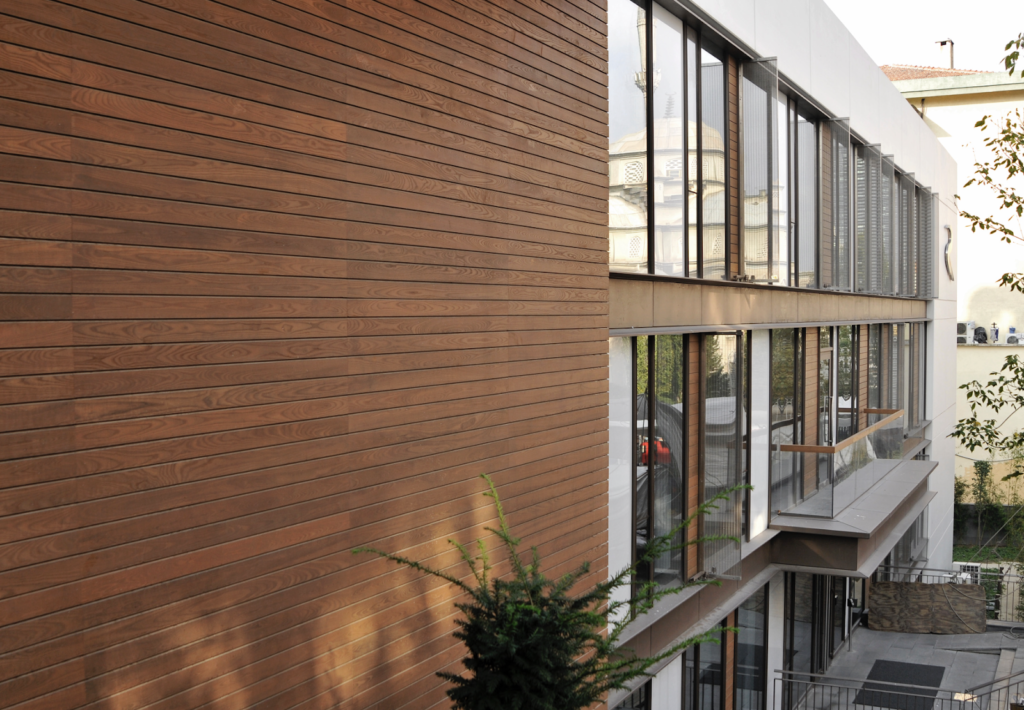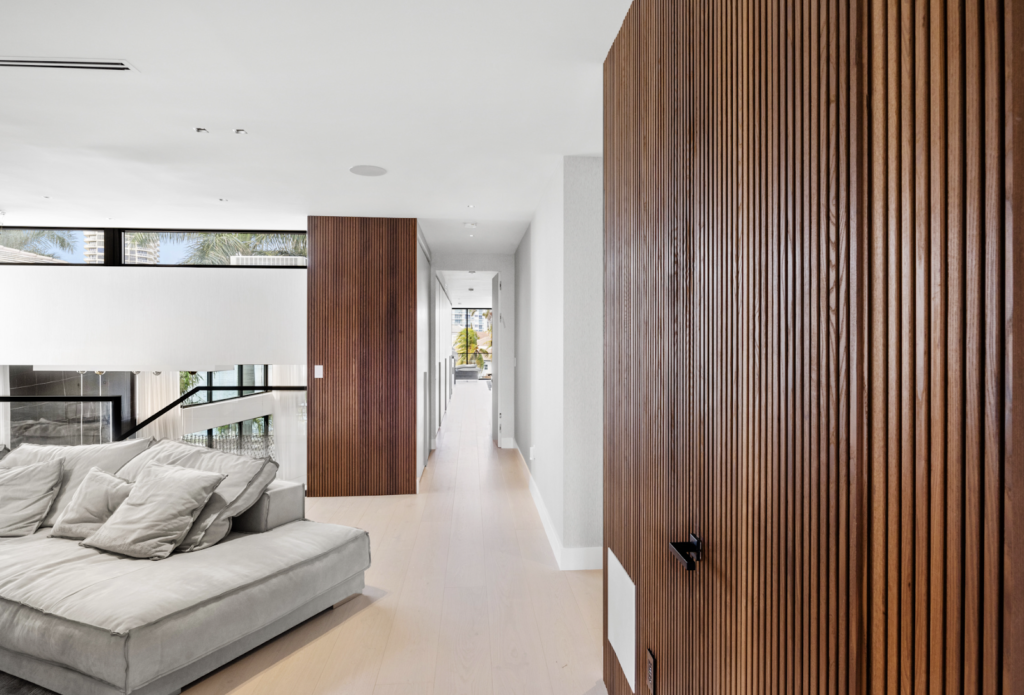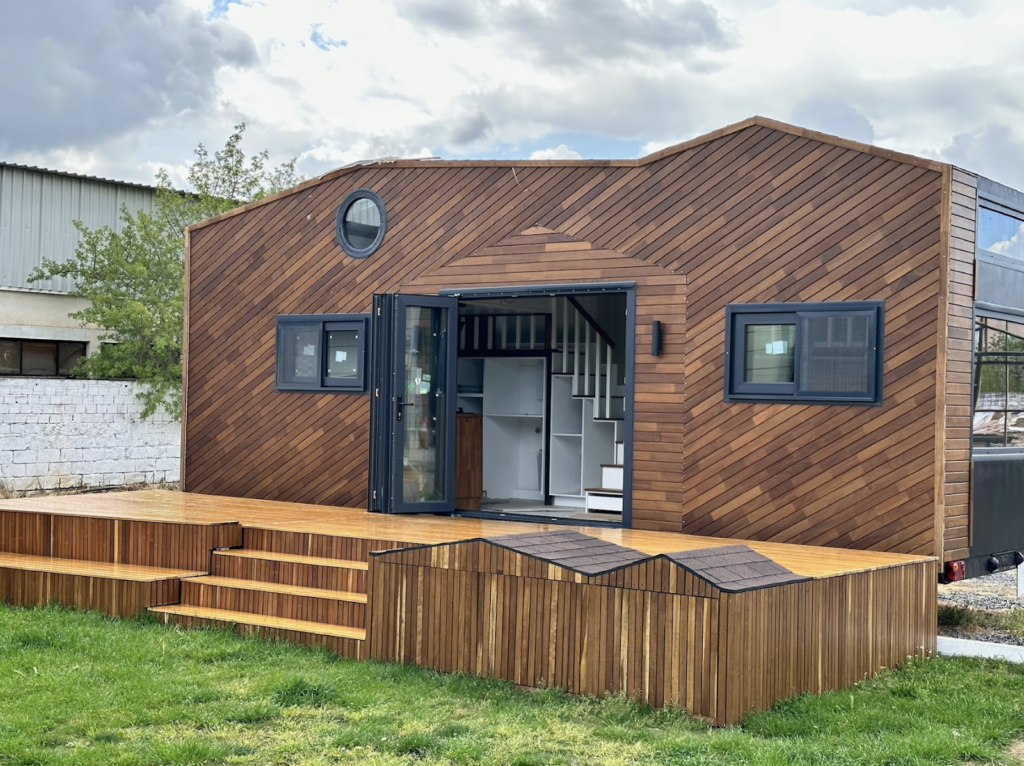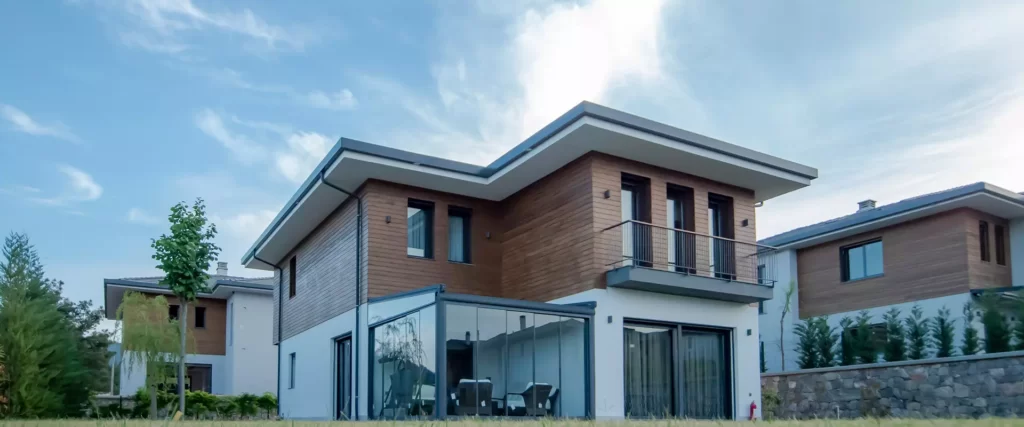If you’re a builder or contractor, using thermally modified red oak is a way to offer a highly durable, eco-friendly wood option to your clients.
And if you want to learn more about the best benefits and applications of thermally modified red oak before using it, keep reading!
Because we’re covering everything you need to know down below!
The Process of Thermally Modifying Red Oak
Thermal modification involves heating red oak in a low-oxygen environment to temperatures over 400°F. This process removes sugars and other organic compounds, which are the primary food sources for fungi and insects.
As a result, the wood becomes more resistant to decay and significantly less prone to moisture absorption, and the wood dimensional stability is increased.
Advantages of Thermally Modified Red Oak
Here are the most important advantages you should know about when it comes to thermally modified red oak:
Exceptional Stability
Thermally modified red oak is known for its exceptional dimensional stability, which allows the wood to withstand fluctuating humidity levels.
If you’re a contractor, you can confidently use this wood in projects that face challenging weather conditions and know that it will retain its shape and structure over time. Why?
Because the reduced risk of movement means fewer repairs or replacements are necessary.
Aesthetic Appeal and Design Versatility of Red Oak
The thermal modification process enriches red oak’s color and gives it a deep, rich hue that enhances its natural grain and texture.
The transformation makes it particularly attractive for high-end architectural designs, which cause the wood’s beauty to grow with time and develop a silver-gray appearance.
How Red Oak Performs Across Different Climates
Thermally modified red oak is exceptionally adaptable to a wide range of environmental conditions. Its low moisture absorption and stability in extreme climates make it a top choice for both residential and commercial projects.
In regions with high humidity, such as the southeastern U.S., red oak’s resistance to moisture prevents warping and decay. But in colder climates, like the northern U.S. and Canada, thermally modified red oak maintains its structural integrity even through freezing temperatures and rapid temperature fluctuations.
Common Applications of Thermally Modified Red Oak

Thermally modified red oak offers contractors versatility, which means that it can be used across a wide range of applications. For example, it can be used as:
Decking and Cladding
In the environments listed above, the wood’s resistance to moisture and insects ensures a decking and cladding option that can last a long time, and its stability means that it will not require as much maintenance.
Additionally, the natural aging process of red oak enhances its appearance and improves the exterior appearance of any home or commercial building.
Interior Design
Inside the home, thermally modified red oak is ideal for flooring, cabinetry, and wall paneling. Plus, its rich color brings warmth and elegance to any interior, while its durability ensures it withstands daily wear and tear.
Specialty Applications
Thermally modified red oak is also used in saunas, furniture, and even outdoor furniture because of its ability to resist moisture and maintain its structural integrity in extreme conditions.
Sustainability and Environmental Impact
Thermally modified red oak not only excels in performance and appearance but also plays a significant role in promoting environmental sustainability. Want to know how?
Here’s what you should know:
Net-Positive Impact
One of the key environmental benefits of red oak is its carbon sequestration capability during its growth cycle.
As the trees mature, they absorb carbon dioxide from the atmosphere, storing it within the wood.
This stored carbon remains locked even after the wood is harvested and used in construction—effectively preventing it from being released back into the environment.
Therefore, thermally modified red oak offers a net-positive carbon impact over its lifecycle.
Certifications
Red oak used for thermal modification is sourced from forests certified by the Forest Stewardship Council (FSC) and the Sustainable Forestry Initiative (SFI), which help businesses acquire certifications that ensure that the wood they use is harvested sustainably.
For contractors working on green building projects, thermally modified red oak meets the criteria for LEED certifications and aligns with eco-conscious construction practices.
Maintaining the Rich Color of Thermally Modified Red Oak
Thermally modified red oak’s natural rich hue is one of its most appealing features, but like all wood exposed to the elements, it can gradually fade over time.
To avoid this from happening, here’s what you do:
Use UV-Resistant Oils and Sealants
To preserve the deep, rich tones of thermally modified red oak, it’s recommended to apply UV-resistant oils or sealants.
These products help protect the wood from the damaging effects of sunlight, which can cause discoloration and fading.
For outdoor applications like decking and cladding, use oils specifically formulated for UV protection, such as:
- Penetrating UV oils: These oils soak into the wood and provide long-lasting protection from sunlight. Applying them once or twice a year can keep the wood’s original color intact while adding a layer of defense against moisture and mildew.
- Sealants: In addition to oils, high-quality sealants can create a protective barrier that locks in the wood’s color and texture. Sealants typically need to be reapplied every couple of years, depending on the level of sun exposure and weather conditions.
Regularly Clean and Reapply
To maximize the life and appearance of thermally modified red oak, however, you should regularly clean and reapply your oils and sealants.
Simply wash the decking or cladding with water and use a gentle wood cleaner to help remove dirt and grime.
After cleaning, reapply UV-protective oils or sealants to reinforce the wood’s defense against the elements.
Use Thermally Modified Red Oak for Your Next Project

When selecting thermally modified wood, you should always consider the balance between durability, moisture resistance, and environmental sustainability.
Thermally modified red oak—with its unique benefits—is ideal for projects requiring strength and longevity, while species like Pine and Ash offer alternatives depending on your specific needs.
But no matter what, thermally modified oak could help you complete your project while knowing it will last for years to come.

